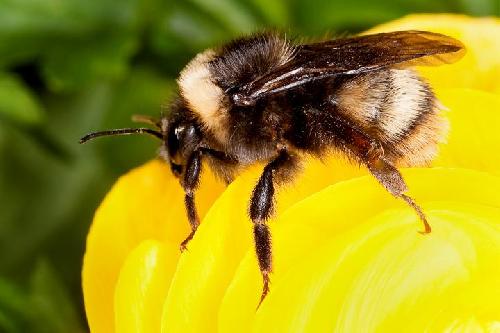CHAMPAIGN, Ill. -- Scientists hoping to explain widespread declines in wild bumble bee populations have conducted the first long-term genetic study of Nosema bombi, a key fungal pathogen of honey bees and bumble bees.
Their study, reported in the Proceedings of the National Academy of Sciences, found that N. bombi was present in the U.S. as early as 1980, well before several species of wild bumble bees started to go missing across the country. The study also found that N. bombi infections in large-scale commercial bumble bee pollination operations coincided with infections and declines in wild bumble bees.
"We used molecular techniques to screen thousands of bumble bees to track Nosema infections before and after the bees began to decline," said University of Illinois entomology professor Sydney Cameron, who led the new research. "We wanted to test the idea floating about for a couple of decades that Nosema bombi prevalence in declining populations is connected with commercial production of bumble bees for pollination."
 Several species of bumble bee, including Bombus occidentalis, pictured, are experiencing steep population declines. Credit: USDA Agricultural Research Service
Several species of bumble bee, including Bombus occidentalis, pictured, are experiencing steep population declines. Credit: USDA Agricultural Research Service
The study included an analysis of DNA sequence variation in N. bombi over time and in different geographical locations. For historical evidence of infection, the team turned to bee specimens in natural history collections in North America and Europe.
"Our results support the hypothesis that Nosema is a key player in U.S. bumble bee declines," Cameron said. "They also indicate a temporal connection between historical infections in wild bumble bee populations and the late 1990s Nosema-induced collapse of commercial production of Bombus occidentalis in North America."
The researchers found parallels between the use of bumble bees to pollinate greenhouse tomatoes in the Pacific West and Eastern Canada and declines in wild bumble bee species that inhabit those same regions. The N. bombi-related declines in wild bees occurred shortly after many commercial bumble bee operations collapsed as a result of N. bombi infections, Cameron said.
"These associations support the hypothesis that Nosema escaped into wild populations from heavily infected commercial colonies, at least during the earlier years of bumble bee domestication in the U.S.," she said.
While the new study is not a definitive explanation of the widespread bumble bee losses, which are likely the result of many factors, Cameron said, it challenges a popular hypothesis about the sudden declines of wild bumblebees in the early 1990s. That hypothesis - that a newly arrived N. bombi strain from Europe caused the bumble bee declines - was an educated guess, since wild bees and commercial bees suffered devastating losses linked to N. bombi infections at about the same time, in the early 1990s, Cameron said.
"But we found low genetic diversity and very few genetic differences between European and U.S. Nosema strains," she said. "And we found no evidence to support the arrival of an unusual strain of N. bombi in North America in the 1990s."
The coincidence of N. bombi infections and losses of bumblebees in wild and commercial populations suggests the fungus is a key player in bumble bee declines, Cameron said. "But we still don't know whether the fungus is becoming more virulent or the bumble bees - already stressed from habitat loss and degradation and other infections - are becoming more susceptible to Nosema."
source: University of Illinois at Urbana-Champaign